
Mycology is the branch of biology concerned with the study of fungi, including their taxonomy, genetics, biochemical properties, and use by humans. Fungi can be a source of tinder, food, traditional medicine, as well as entheogens, poison, and infection.

Edible mushrooms are the fleshy fruit bodies of several species of macrofungi. Edibility may be defined by criteria including the absence of poisonous effects on humans and desirable taste and aroma. Edible mushrooms are consumed for their nutritional and culinary value. Mushrooms, especially dried shiitake, are sources of umami flavor.
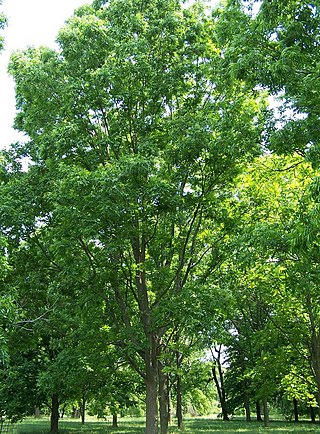
The pecan is a species of hickory native to the southern United States and northern Mexico in the region of the Mississippi River.

A truffle is the fruiting body of a subterranean ascomycete fungus, predominantly one of the many species of the genus Tuber. In addition to Tuber, over one hundred other genera of fungi are classified as truffles including Geopora, Peziza, Choiromyces, and Leucangium. These genera belong to the class Pezizomycetes and the Pezizales order. Several truffle-like basidiomycetes are excluded from Pezizales, including Rhizopogon and Glomus. Truffles are ectomycorrhizal fungi, so they are usually found in close association with tree roots. Spore dispersal is accomplished through fungivores, animals that eat fungi. These fungi have significant ecological roles in nutrient cycling and drought tolerance.

The Jerusalem artichoke, also called sunroot, sunchoke, wild sunflower, topinambur, or earth apple, is a species of sunflower native to central North America. It is cultivated widely across the temperate zone for its tuber, which is used as a root vegetable.
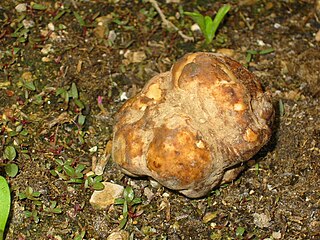
The Terfeziaceae, or desert truffles, is a family of truffles endemic to arid and semi-arid areas of the Mediterranean Region, North Africa, and the Middle East, where they live in ectomycorrhizal association with Helianthemum species and other ectomycorrhizal plants. This group consists of three genera: Terfezia, Tirmania, and Mattirolomyces. They are a few centimetres across and weigh from 30 to 300 grams (1–10 oz). Desert truffles are often used as a culinary ingredient.
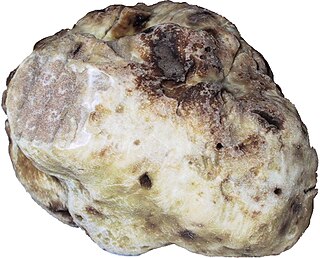
Tuber magnatum, the white truffle, is a species of truffle in the order Pezizales and family Tuberaceae. It is found in southern Europe.
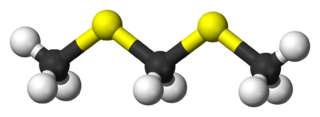
2,4-Dithiapentane is an organosulfur compound. It is a colorless liquid with a strong odor.

Hydnum is a genus of fungi in the family Hydnaceae. They are notable for their unusual spore-bearing structures of teeth rather than gills. The best known are the edible species Hydnum repandum and H. rufescens. There are no known toxic varieties of Hydnum. Widely regarded as important maintainers of forest ecosystems, the Hydnum genus is known to have ectomycorrhizal relationships with multiple plant families. Hydnum has many brittle, white teeth from which the spores drop. Some species have teeth which hang from ascending branches, while other species have teeth which project downwards from the undersurfaces of dead wood. Most Hydnum species are safe to eat, and contain many fatty acids and antioxidants.
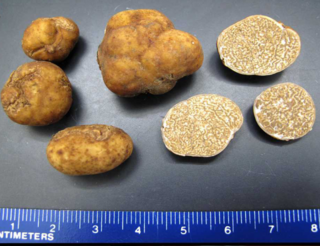
Tuber lyonii, also known as the American brown truffle or the pecan truffle, is a species of truffle native to North America. The pecan truffle is so named because it is most commonly found in pecan orchards, in association with the pecan tree. However, the pecan is not its only symbiote. Formerly considered nothing more than a nuisance by pecan farmers, the pecan truffle has been gaining in popularity as an edible mushroom in recent years and can fetch over $160 per pound at market.
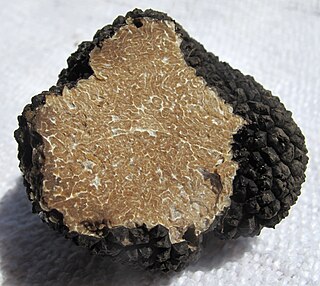
The summer truffle or burgundy truffle is a species of truffle, found in almost all European countries.
Mackintoshia is a fungal genus in the family Boletaceae. It was originally placed in Cortinariaceae. The genus is monotypic, containing the single truffle-like species Mackintoshia persica, found in Zimbabwe. This fungus, eaten by both the common duiker and the Karanga people, is little known outside the Midlands Province of Zimbabwe. Mackintoshia was circumscribed by Giovanni Pacioni and Cathy Sharp in 2000. The genus name honors British-Rhodesian farmer Robbie Mackintosh, who collected and documented some early specimens. The specific epithet persica is Latin for peach, referring to its odor.

Tuber oregonense, commonly known as the Oregon white truffle, is a species of edible truffle in the genus Tuber. Described as new to science in 2010, the North American species is found on the western coast of the United States, from northern California to southern British Columbia west of the Cascade Range. A mycorrhizal fungus, it grows in a symbiotic association with Douglas fir. It overlaps in distribution with the closely related T. gibbosum, but they have different growing seasons: T. oregonense typically appears from October through March, while T. gibbosum grows from January to June. The fruit bodies of the fungus are roughly spherical to irregular in shape, and resemble small potatoes up to 5 cm (2 in) in diameter. Inside the truffle is the gleba, which is initially white before it becomes a marbled tan color. The large, often thick-walled, and strongly ornamented spores are produced in large spherical asci. The truffle is highly prized for its taste and aroma. Some individuals have claimed success in cultivating the truffles in Christmas tree farms.

Tuber gibbosum is a species of truffle in the genus Tuber. It is found in the Pacific Northwest region of the United States, where it grows in an ectomycorrhizal association with Douglas-fir. It is commercially collected between as early as October and into March.

Tuber sinoexcavatum is a species of truffle in the family Tuberaceae. Described as a new species in 2011, it is found in China. The pale yellowish-brown to brown truffles measure up to 3 cm (1.2 in) in diameter. The species is named for its close resemblance to the common European truffle T. excavatum.

Tuber melanosporum, called the black truffle,Périgord truffle or French black truffle, is a species of truffle native to Southern Europe. It is one of the most expensive edible fungi in the world. In 2013, the truffle cost between 1,000 and 2,000 euros per kilogram.

Tuber donnagotto is a species of truffle in the family Tuberaceae. Described as a new species in 2012, it is found in Croatia. The black truffle measures 2–7 cm (0.8–2.8 in) in diameter.
Pachyphloeus depressus is a species of ascomycete fungus that forms truffle-like fruitbodies. It is found in southwestern China, where it has been reported from Qiaojia County, Yunnan Province, and Huili County, Sichuan Province. These counties are both near the Jinsha River. Fruitbodies of the fungus are smooth and greenish-brown—distinctive features in the genus Pachyphloeus. They measure 0.9–2.1 cm (0.4–0.8 in) in diameter, and have a rubbery texture. When ripe, the odor of the flesh is similar to burned potatoes. Spores are spherical, measuring 15.7–20 µm with coarse rod-like spines up to 2.5 µm on the surface. The fungus has been called the "green female truffle" because of its superficial resemblance to the locally common species Tuber pseudohimalayense.

Tuber indicum, commonly known as the Chinese black truffle or the Asian black truffle, is an edible fungus known for its hypogean fruiting bodies, characteristic of the Tuber genus. It is found natively in Himalayan India and parts of China, but has also been found invasively in the United States and Italy. It is sold commercially and often confused with Tuber melanosporum.


















